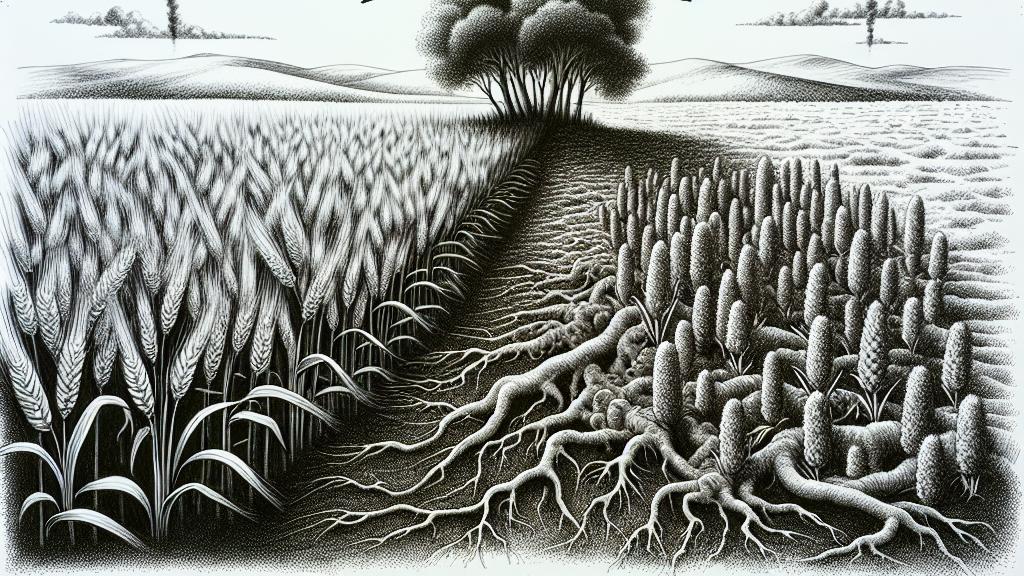Understanding the Arms Race Between Barley and Fungal Pathogens
Overview
- Groundbreaking research uncovers unique defense compounds in barley against fungal threats.
- Bipolaris sorokiniana, a notorious pathogen, cleverly adapts to these defenses.
- This intricate battle showcases the evolving dynamics between plants and their microbial foes.

The Context of the Study
In a compelling investigation, scientists from the Leibniz Institute of Plant Biochemistry in Germany reveal the fierce, ongoing struggle between barley and its adversarial fungal invaders. This battle is intensifying due to climate change, which brings warmer temperatures and significantly increases the prevalence of harmful pathogens like Bipolaris sorokiniana. This root rot fungus can cause devastating crop losses, turning fertile fields into barren lands. This intricate study does not just shed light on how plants defend themselves; it illustrates that some pathogens, rather than yielding, evolve sophisticated countermeasures, turning plant defenses into pathways for their survival, significantly impacting agricultural productivity.
Discovery of Hordedanes
While exploring barley's defenses, the researchers uncovered an exciting class of antimicrobial compounds known as hordedanes. Found in the roots of infected barley, these diterpenoids serve as a formidable shield against a variety of detrimental fungal species by stopping their spores from germinating and inhibiting growth. Yet, in an astonishing twist of fate, Bipolaris sorokiniana demonstrates an extraordinary ability to flourish in the presence of these very compounds. Instead of retreating, it utilizes these phytoalexins to enhance its growth—imagine a clever thief who uses the very security system meant to protect a treasure to access it instead! This revelation underscores not only the pathogen's adaptability but also the complex and often bewildering relationship between plants and fungi.
Implications for Agriculture
The implications of these findings hold immense significance for the agricultural community, as they pave the way for innovative breeding strategies aimed at developing resilient barley varieties. As farmers face the escalating threats of climate change and pathogenic invasions, understanding the biochemical interplay between plants and pathogens becomes crucial. Picture a future where barley plants are not only resistant but thrive in adverse conditions—this research could be the key to unlocking such possibilities. Through continued exploration of these dynamics, we can better prepare ourselves to ensure food security and sustain livelihoods, adapting agriculture to changing environmental conditions. Such work is vital not just for today but for future generations facing the specter of climate change and its challenges on agriculture.

Loading...